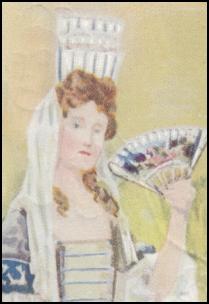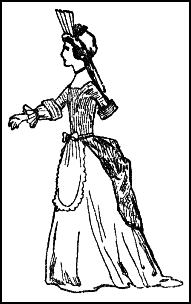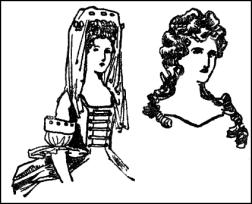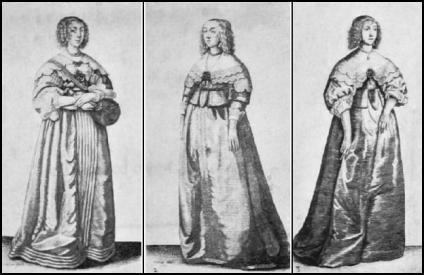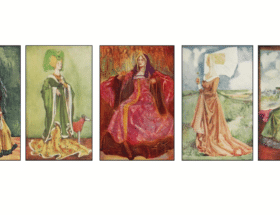By Pauline Weston Thomas for Fashion-Era.com
1625-1702 - Jacobean Ladies Hairstyles & Headdresses as Shown in 'English Costume History by Dion Clayton Calthrop'
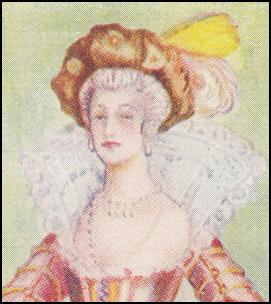 This costume history page is about hair fashion history. It consists of a selection of women only headdresses and hairstyles of illustrations with Calthrop's text and from Calthrop's English Costume from 1625 to 1702.
This costume history page is about hair fashion history. It consists of a selection of women only headdresses and hairstyles of illustrations with Calthrop's text and from Calthrop's English Costume from 1625 to 1702.
- Hairstyle & Dress of a Woman of the Time of Charles I Cromwell Puritan Dress - Headwear
A WOMAN OF THE TIME OF JAMES I -1603-1625
Jacobean Ladies Hairstyles
Early in the reign the high-dressed hair was abandoned, and to take its place the hair was dressed so that it was gathered up by the ears, left parted on the crown, and twisted at the back to hold a plume or feather. Time went on, and hair-dressing again altered; the hair was now taken in four parts: first the hair was drawn well back off the forehead, then the two side divisions were curled neatly and dressed to fall over the ears, the fourth group of hair was neatly twisted and so made into a small knot holding the front hair in its place. Later on came the fringe of small curls, as in the portrait of Queen Henrietta at Windsor by Vandyck.Costumes By Hollar
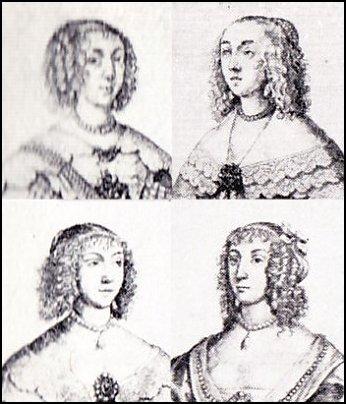
Above - Hairstyles - Illustrations by Hollar
§
Hairstyle & Dress of a Woman of the Time of Charles I
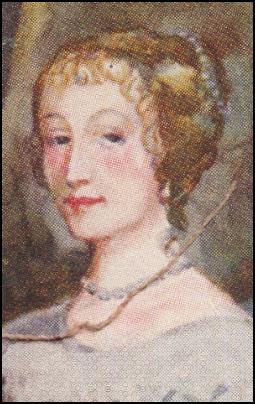
Hairstyle & Dress of a Woman of the Time of Charles I
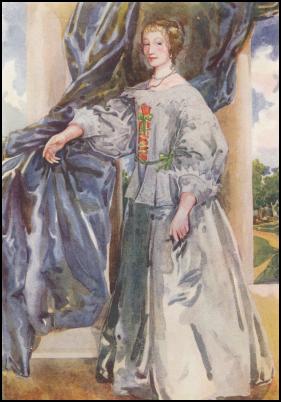
A WOMAN OF THE TIME OF THE CROMWELLS - 1649-1660
This is not one of the most Puritanical dresses, but shows how the richness of the reign of Charles I was toned down. She carries a muff in her hand, wears a good wide collar and cuffs, and neat roses on her shoes. This shows the modification of the dress of the time of Charles I. Not an extreme change, but an endeavour towards simplicity.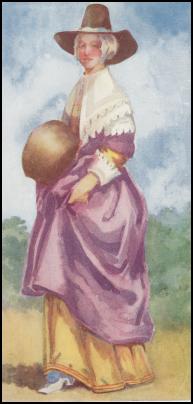
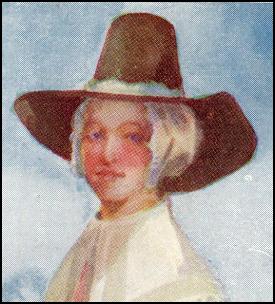
§
Loose Locks, Wigs and Periwigs
With the careless air that was then adopted by everybody, which was to grow yet more carefully careless in the reign of Charles II, the hair was a matter which must have undivided attention, and centuries of tight dressing had not improved many heads, so that when the loose love-locks and the dainty tendrils became the fashion, many good ladies and gentlemen had recourse to the wigmaker. In the days when to be wigless was to be undressed the perruquier was a very great person.Fore Top Hair Loop Lock
The ladies, for a time, indulged in a peculiar loop of hair on their foreheads, called a 'fore-top,' which gave rise to another fashion, less common, called a 'taure,' or bull's head, being an arrangement of hair on the forehead resembling the close curls of a bull.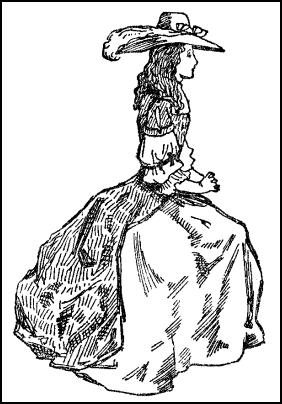
A WOMAN OF THE TIME OF CHARLES II - 1660-1685
The costume plate shows a woman who has adopted the fair golden locks hairstyle and twirled into ringlets which are tied with a ribbon which is dressed over a frame at the sides.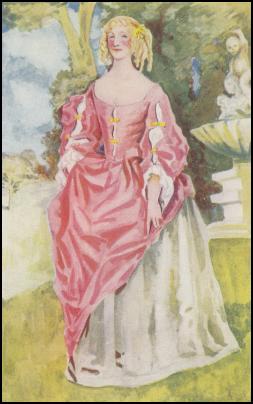
Ladies Costume - Time of Charles II
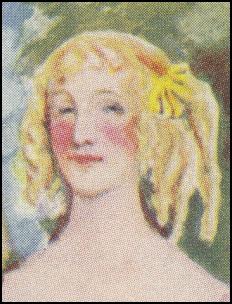
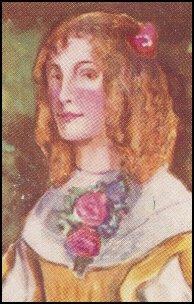
Left - Ladies Hairstyle - Time of Charles II Right - Ladies Hairstyle - Time of James II
THE WOMEN
A WOMAN OF THE TIME OF WILLIAM AND MARY - 1689-1702
Here you see the cap called the 'fontage,' the black silk apron, the looped skirt, and the hair on the high frame called a 'commode.'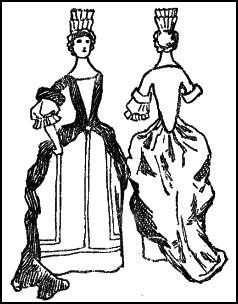
Weeds
'Weeds' is a term still in use in 'widow's weeds,' meaning the entire dress appearance of a woman.Commode, Top-Not, Fontage Tower
